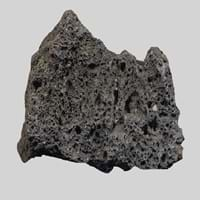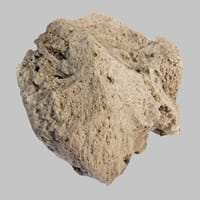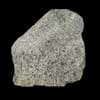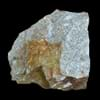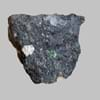Definition
Scoria is a dark-colored extrusive igneous rock with abundant round bubble-like cavities
Pumice is a volcanic rock that consists of highly vesicular rough textured volcanic glass, which may or may not contain crystals
Discoverer
Unknown
Unknown
Etymology
From late Middle English (denoting slag from molten metal), from Greek skōria refuse, from skōr dung
From Old French pomis, from a Latin dialect variant of pumex
Class
Igneous Rocks
Igneous Rocks
Sub-Class
Durable Rock, Medium Hardness Rock
Durable Rock, Medium Hardness Rock
Other Categories
Fine Grained Rock, Opaque Rock
Fine Grained Rock, Opaque Rock
Texture
Vesicular
Vesicular
Color
Black, Brown, Dark Grey to Black, Red
Beige, Colourless, Grey, Light Green, Light Grey, Pink, White, Yellow- grey
Durability
Durable
Durable
Scratch Resistant
Yes
Yes
Appearance
Glassy and Vesicular
Vesicular
Interior Uses
Decorative Aggregates, Interior Decoration
Decorative Aggregates, Flooring, Homes, Interior Decoration
Exterior Uses
Garden Decoration, Paving Stone
As Building Stone, As Facing Stone, Garden Decoration, Paving Stone
Other Architectural Uses
Curbing
Curbing, Powder
Construction Industry
Cement Manufacture, Construction Aggregate, for Road Aggregate, In landscaping and drainage works
As Dimension Stone, Cement Manufacture, for Road Aggregate, In landscaping and horticulture, Making natural cement, Production of lightweight concrete blocks
Medical Industry
Not Yet Used
As an abrasive in skin exfoliating products, In Chemical and Pharmaceutical Industry, Medicines and Cosmetics
Antiquity Uses
Artifacts, Monuments, Sculpture
Artifacts
Commercial Uses
As a traction material on snow-covered roads, Creating Artwork, High-temperature insulation, In gas barbecue grills
As a traction material on snow-covered roads, As an abrasive in pencil erasers, Fine abrasive used for polishing, Manufacture of Soap, Solvents, Dyes, Plastics and Fibres, Used in aquariums
Types
Not Available
Scoria
Features
Available in Lots of Colors and Patterns, Generally rough to touch, Surfaces are often shiny
Host Rock for Lead
Archaeological Significance
Monuments
Used
Not Yet Used
Famous Monuments
Data Not Available
Not Applicable
Sculpture
Used
Not Yet Used
Famous Sculptures
Data Not Available
Not Applicable
Figurines
Used
Not Yet Used
Formation
Scoria forms when magma containing huge amount of dissolved gas flows from a volcano during an eruption.
Pumice rock forms when the magma cools so quickly that atoms in the melt are not able to arrange themselves into a crystalline structure.
Mineral Content
Apatite, Biotite, Calcite, Feldspar, Hematite, Hornblade, Ilmenite, Magnetite, Olivine, Pyroxene, Quartz, Silica
Aluminum Oxides, Calcite, Carbonate, Iron Oxides, Silica
Compound Content
Ca, NaCl
Al, Aluminium Oxide, CaO, Carbon Dioxide, MgO, Silicon Dioxide
Types of Metamorphism
Burial Metamorphism, Cataclastic Metamorphism, Contact Metamorphism
Burial Metamorphism, Impact Metamorphism
Types of Weathering
Biological Weathering, Chemical Weathering, Mechanical Weathering
Biological Weathering, Chemical Weathering, Mechanical Weathering
Types of Erosion
Chemical Erosion, Coastal Erosion, Glacier Erosion
Chemical Erosion, Coastal Erosion, Glacier Erosion, Sea Erosion, Water Erosion, Wind Erosion
Grain Size
Fine Grained
Fine Grained
Fracture
Conchoidal
Planar
Streak
White
White, Greenish White or Grey
Porosity
Highly Porous
Highly Porous
Luster
Subvitreous to Dull
Earthy
Compressive Strength
Not Available
Specific Gravity
Not Available
2.86
Transparency
Opaque
Opaque
Density
Not Available
0.25-0.3 g/cm3
Specific Heat Capacity
Not Available
Resistance
Heat Resistant, Impact Resistant, Pressure Resistant, Wear Resistant
Impact Resistant, Pressure Resistant
Deposits in Eastern Continents
Asia
Afghanistan, Indonesia, Japan, Russia
Afghanistan, Indonesia, Japan, Russia
Africa
Ethiopia, Kenya, Tanzania
Ethiopia, Kenya, Tanzania
Europe
Greece, Hungary, Iceland, Italy, Turkey
Greece, Hungary, Iceland, Italy, Turkey
Others
Not Yet Found
Not Yet Found
Deposits in Western Continents
North America
Bahamas, Barbados, Canada, Costa Rica, Cuba, Jamaica, Mexico, USA
Bahamas, Barbados, Canada, Costa Rica, Cuba, Jamaica, Mexico, USA
South America
Argentina, Chile, Ecuador, Peru
Argentina, Chile, Ecuador, Peru
Deposits in Oceania Continent
Australia
New Zealand, Western Australia
New Zealand, Western Australia
All about Scoria and Pumice Properties
Know all about Scoria and Pumice properties here. All properties of rocks are important as they define the type of rock and its application. Scoria and Pumice belong to Igneous Rocks.Texture of Scoria is Vesicular whereas that of Pumice is Vesicular. Scoria appears Glassy and Vesicular and Pumice appears Vesicular. The luster of Scoria is subvitreous to dull while that of Pumice is earthy. Scoria is available in black, brown, dark grey to black, red colors whereas Pumice is available in beige, colourless, grey, light green, light grey, pink, white, yellow- grey colors. The commercial uses of Scoria are as a traction material on snow-covered roads, creating artwork, high-temperature insulation, in gas barbecue grills and that of Pumice are as a traction material on snow-covered roads, as an abrasive in pencil erasers, fine abrasive used for polishing, manufacture of soap, solvents, dyes, plastics and fibres, used in aquariums.
